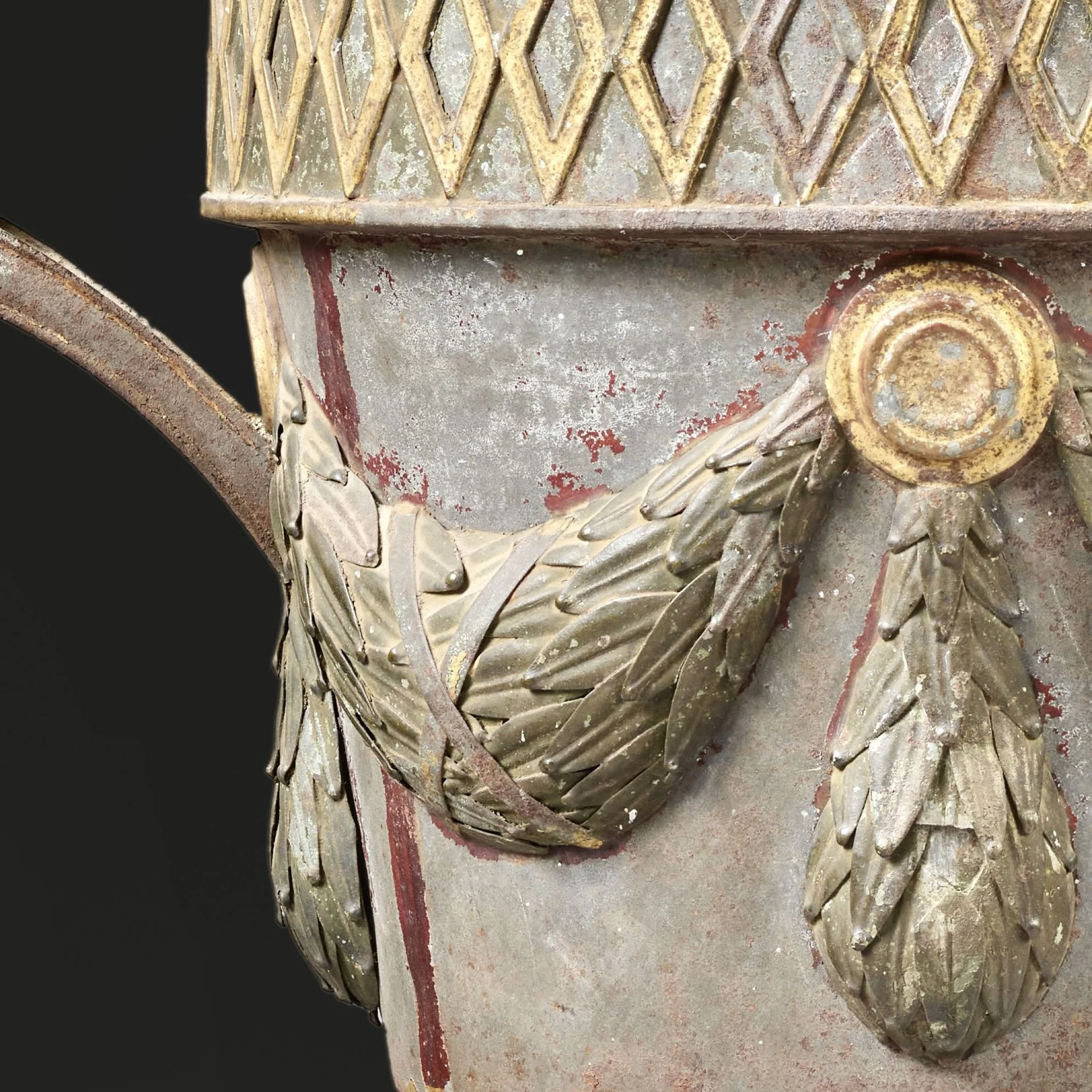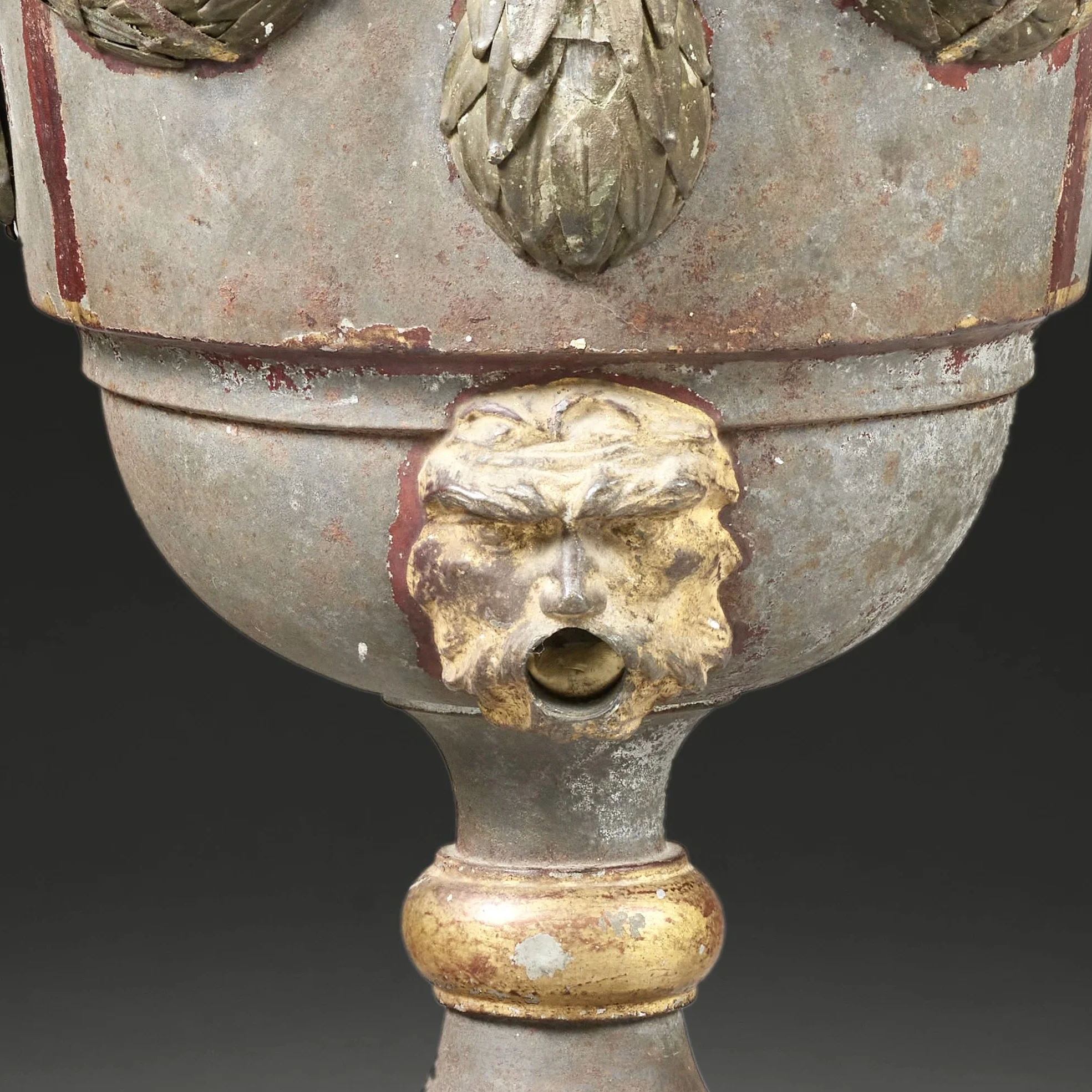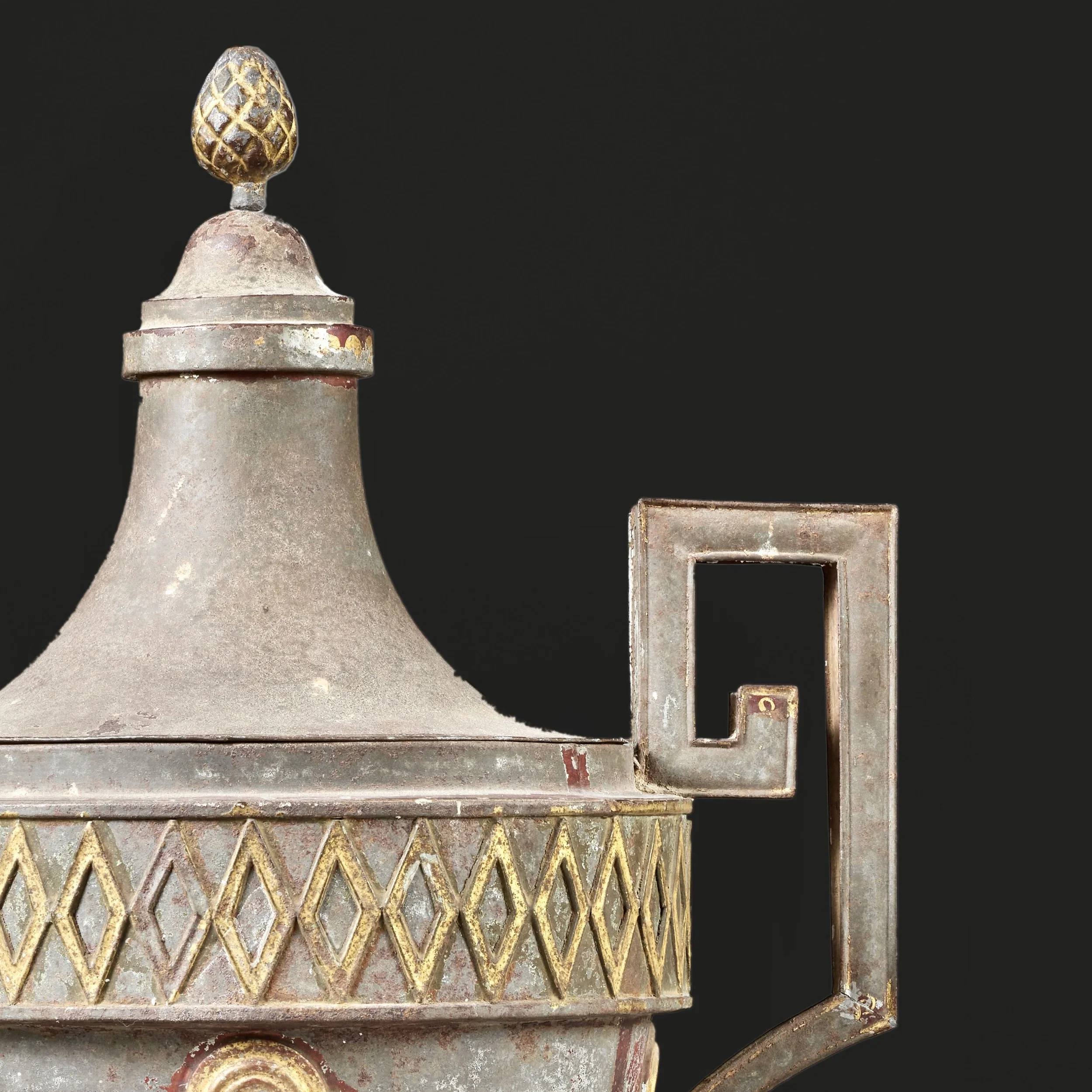Fountain in painted and gilded tin
- Description
- Histoire
France, late 18th century
Painted and gilded tin
Height: 93 cm – 36 ½ inches
Length: 50 cm – 20 inches
This sheet metal fountain has the silhouette of an urn, topped with a capital lid and crowned with a pinecone. A wide band of gilt lozenges runs around the circumference.
A loose laurel garland, held in place by a gilt sheet metal disk, adorns the central part of the fountain.
The center of the lamp base is decorated with a gilded sheet metal mask. Its wide-open mouth allows the water to flow out. The pedestal base features a wide gilt metal ring in the center, with a simple molding on the lower part. Wide Greek handles on either side of the fountain complete the ensemble, with a few traces of red paint that has faded over time. The fountain rests on a small square base.
Painted sheet metal objects
Recently studied, the earliest surviving objects in lacquered sheet metal date from the Régence or early Louis xv period, when the craze for oriental lacquers and the feverish pursuit of lacquer imitation seem to have been at the origin of the development of this technique.
While the decoration of these objects imitates lacquer, their forms and typologies were inspired from the outset by silverware and, above all, by earthenware and porcelain. A rarity under Louis xv, lacquered sheet metal was revived by Anglomania in the second half of the 18th century. In fact, since the 1730s, a highly successful painted sheet metal factory had been established in Pontypool, England. In France, two stores specialized, among other things, in English objects and imitations of England.
The first, the Magasin Anglais, was run by Madame Blakey from 1766 to 1776 on rue des Prouvaires. The second, Au Petit Dunkerque, was one of the most fashionable stores in Paris at the end of the 18th century. In response to these English imports, two factories dedicated exclusively to this type of production were created, in addition to the varnish painters' workshops. The first factory, known as "de la Petite Pologne", was established on May 5, 1768, and ceased operations in December 1772. The second Parisian factory was created on March 30, 1771, but by 1776 its production of locksmith's items was almost three times greater than that of lacquered items.
Merchants such as Granchez at Au Petit Dunkerque, and Madame Blakey in particular, major players in the art market, always eager to create new fashions for their enthusiasts, took an interest in sheet metal objects, and are probably responsible for the rare examples of gilt bronze mounts used as jewel cases for some of them.
Neoclassical taste and Greek influence
This fountain is perfectly in keeping with the neoclassical trend of the 1770s.
As early as the 1750s, in response to the claims of a small group of critics who, denouncing the extravagance of rocaille, aspired to rediscover the "noble simplicity" of the masters of Antiquity, an increasingly pronounced taste for neoclassical vocabulary began to emerge. The trip to Italy organized by the Marquise de Pompadour to train the taste of her brother, Abel Poisson, Marquis de Vandières, future Director General of the King's Buildings, in the company of the engraver Charles-Nicolas Cochin, the architect Jacques-Germain Soufflot and the Abbé Leblanc between November 1749 and March 1751, was considered at the time to mark the emergence of the "Greek taste". It was followed in December 1754 by the publication in the Mercure de France of a "supplication aux Orfèvres, Ciseleurs, Sculpteurs en bois pour les appartements et autres" by Louis-Sébastien Mercier, a plea for straight lines, respect for proportions and balance, and a pressing reminder of the nobility of the ancient ornamental repertoire.
And so, in the 1760s, this new taste took hold of the capital like a veritable madness. Painters, cabinetmakers and bronze makers all responded to the new taste, prefiguring the vocabulary developed in the Louis xvi period. This fountain, with its antique vase shape, mascaron head, geometric frieze, laurel garland and Greek handles, displays the entire vocabulary of this stylistic trend.
Bibliography
- Sous la direction d’Anne Forray-Carlier et de Monika Kopplin, Les secrets de la laque française, le vernis Martin, Paris, 2014.
- Pierre Verlet, Les bronzes dorés français du xviiie siècle, Paris 1987.
- Pierre Kjellberg, Objets montés du Moyen Age à nos jours, Paris, 2000.



